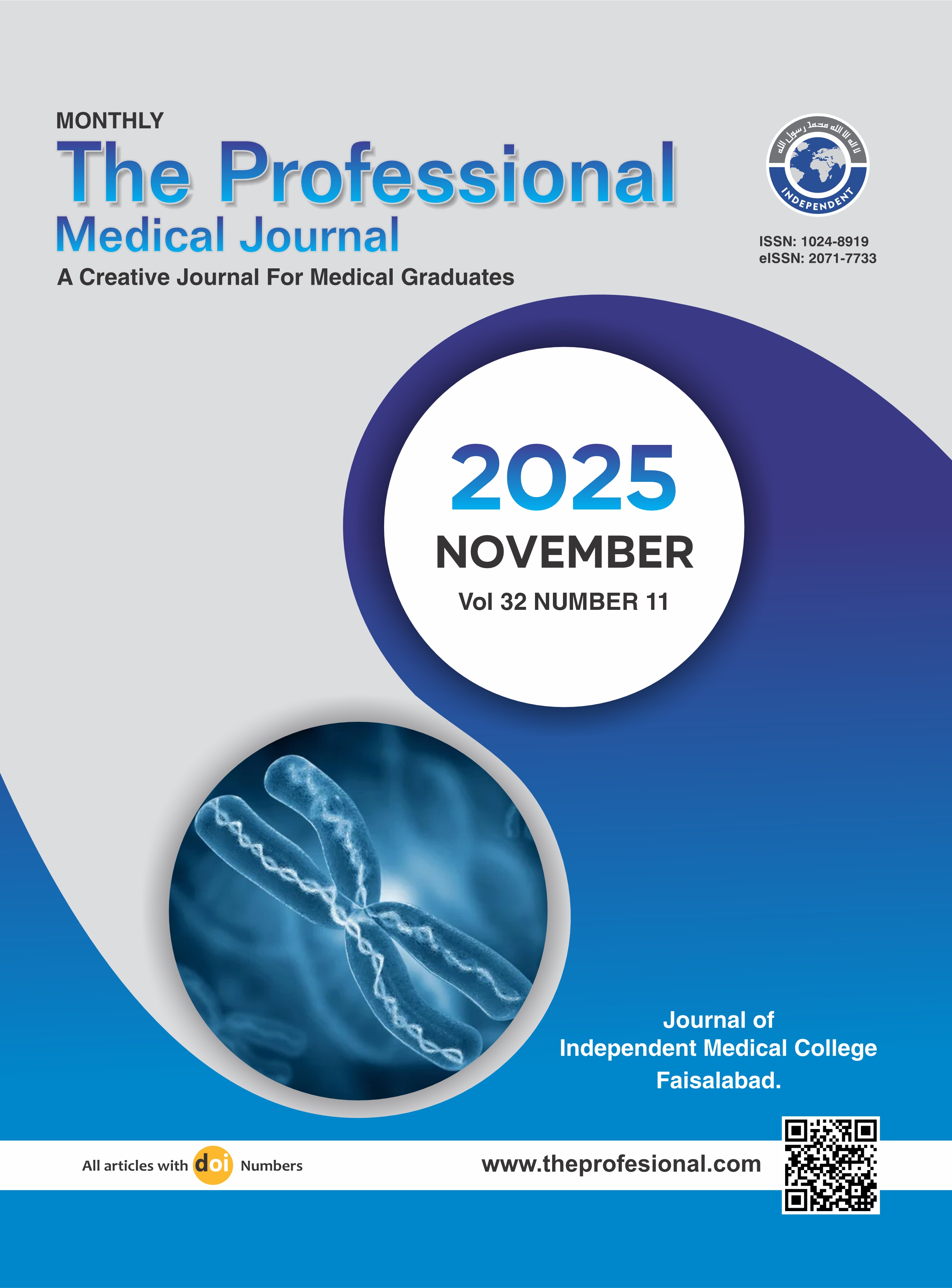Frequency of Microorganisms Detected in Patients with Empyema Thoracis at Department of Pulmonology, Sheikh Zayed Medical College/Hospital, Rahim Yar Khan
DOI:
https://doi.org/10.29309/TPMJ/2025.32.11.10025Keywords:
Empyema Thoracis, Gram-positive Bacteria, Microbial Spectrum, Pleural Fluid CultureAbstract
Objective: To determine the frequency and types of microorganisms isolated from pleural fluid samples of patients with empyema thoracis, in order to aid empirical antibiotic selection and improve microbiological diagnosis in the local clinical setting. Study Design: Cross-sectional study. Setting: Department of Pulmonology, Sheikh Zayed Medical College/Hospital, Rahim Yar Khan. Period: March 2024 to February 2025. Methods: A total of 102 patients aged 13–70 years with clinically and radiologically confirmed empyema thoracis were enrolled through non-probability consecutive sampling. Pleural fluid was aseptically aspirated and subjected to microbiological culture and sensitivity testing. Data were recorded on a structured proforma and analyzed using SPSS version 26.0, with statistical significance set at p < 0.05. Results: Out of 102 patients, the mean age was 44.7 ± 13.4 years, with a mean symptom duration of 20.9 ± 7.4 days. Males comprised 68.6% and rural residents 58.8%. Right-sided effusion was most common (60.8%). Comorbidities included hypertension (25.5%) and diabetes (21.6%). Culture revealed monomicrobial growth in 54.9%, polymicrobial in 17.6%, and sterile fluid in 27.5%. Staphylococcus aureus was the most frequently isolated organism with significant male predominance (p = 0.041). Gram-positive organisms accounted for 39.2%, Gram-negative for 33.3%. Conclusion: Empyema thoracis in our region showed predominance of Gram-positive organisms, especially Staphylococcus aureus, with a significant male association, emphasizing the need for tailored empirical antimicrobial strategies.
Downloads
Published
Issue
Section
License
Copyright (c) 2025 The Professional Medical Journal

This work is licensed under a Creative Commons Attribution-NonCommercial 4.0 International License.


